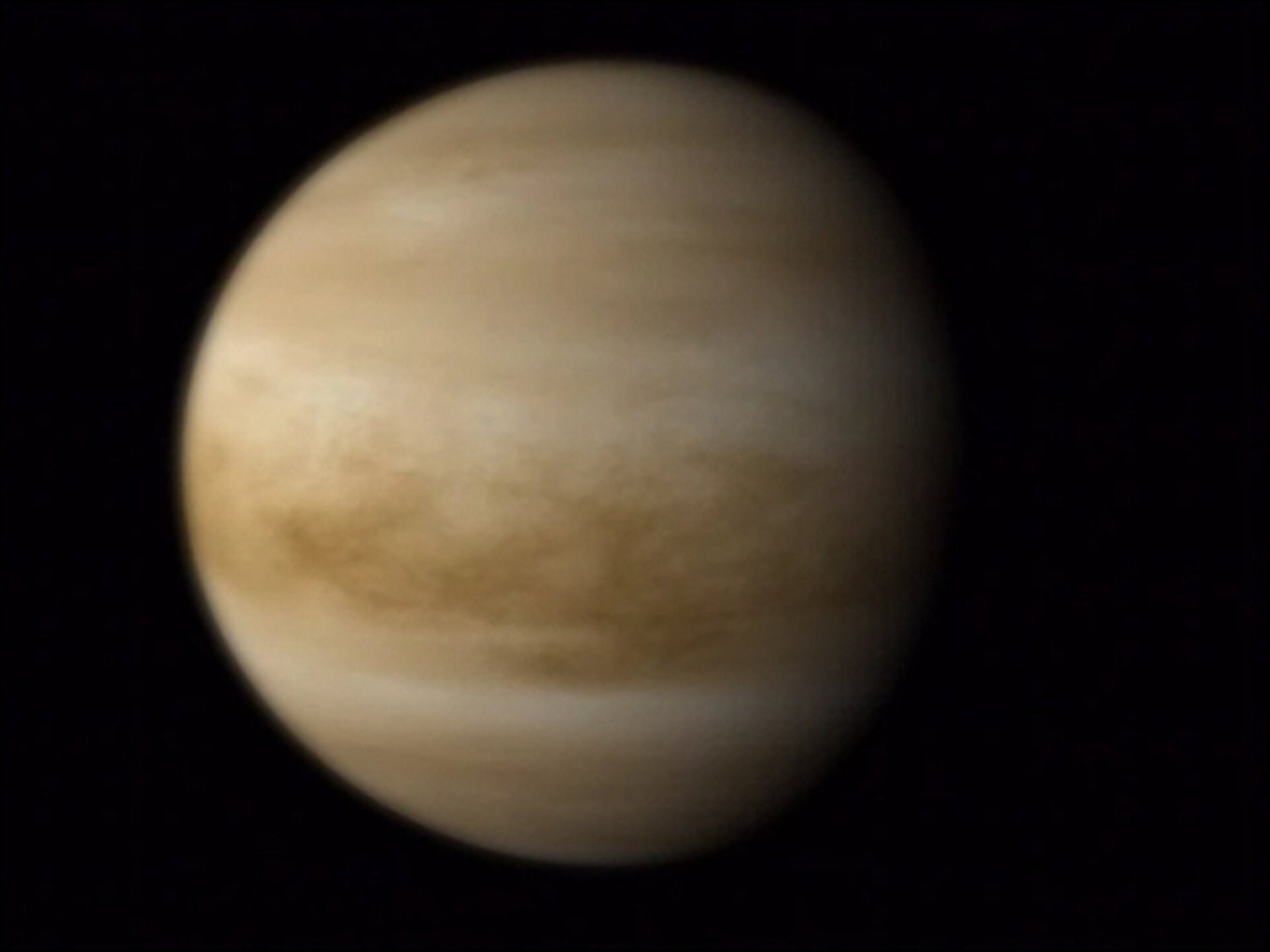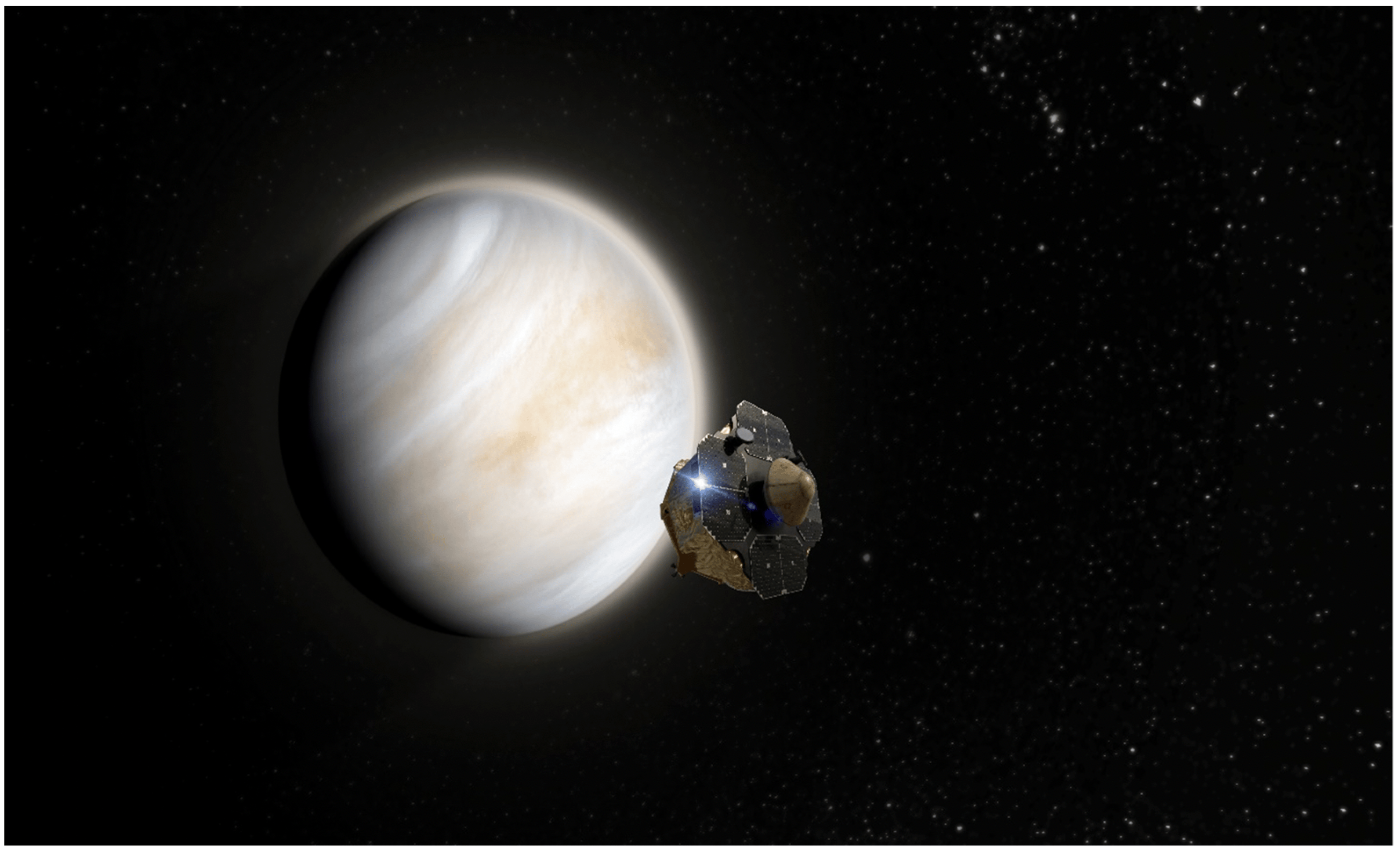
Venus is a planet similar in structure and size to Earth, but with a thick atmosphere of toxic sulfuric acid clouds. These clouds completely shroud Venus, creating a greenhouse effect that heats the planet’s surface to a scorching 900 degrees Fahrenheit (475 degrees Celsius). These temperatures are hot enough to melt lead and too blistering to support life.
For this reason, the possibility of life on Venus is often overlooked for other places like Mars and Europa. But a new study published in the Proceedings of the National Academy of Sciences suggests that conditions more hospitable for life may be hidden in the cooler clouds instead. The researchers found that nucleic acids, the information-carrying molecules that make up DNA and RNA, are stable in laboratory conditions simulating the sulfuric acid droplets in Venus’s clouds.
The concentrated sulfuric acid in the venusian clouds was thought to destroy these critical molecules, but they have now been shown to persist for up to two weeks in these conditions. This suggests that the chemical building blocks of life needed to support life on Earth may survive in previously unknown conditions.
“It’s a very unfriendly place; it’s very dry and has very low water activity. And the clouds themselves are made of mostly or almost entirely sulfuric acid, a chemical that is very aggressive and would destroy all Earth’s life. So, you have to admit that sounds pretty bad,” says study lead author Sara Seager. As an astrophysicist and planetary scientist at MIT, Seager has been searching for exoplanets for decades and is a pioneer in theoretical models of atmospheres and theories about life on other worlds. She is also part of a team currently developing new missions to Venus to explore its clouds and look for signs of life.
A stable base
For life to form, it needs a liquid solvent to enable reactions within cells. Among the rocky planets and moons of our solar system, sulfuric acid is one of three known liquids found. Liquid water is present on Earth and below the surface of several icy moons like Jupiter’s Europa and Saturn’s Enceladus. And liquid methane seas abound on Titan. And aside from Venus, sulfuric acid may also be also found on some exoplanets.
On Earth, nucleic acids — deoxyribonucleic acid (DNA) and ribonucleic acid (RNA) — are the carrier of all generic information. They are the code that cells read to create proteins and carry out the functions of life. Their double helix structure encodes the instruction book for life and allows this information to be copied and passed to the next generation. And on Earth, water makes this entire process possible.
When it comes to whether life could survive in Venus’ clouds, “[nucleic acids’] stability in sulfuric acid is important because they are the basic building blocks for life on Earth. They are based on water chemistry. But if those nucleic acids could also exist in sulfuric acid, the next big question is, could sequences like RNA and DNA, which are needed to transfer the information from one generation to the next, could they also survive?” says Sanjay Limaye, an expert on the venusian atmosphere at the University of Wisconsin-Madison, who was not involved with the study.
To see if they could survive in sulfuric acid, Seager’s team took DNA and RNA’s nucleic acid bases — adenine, cytosine, guanine, thymine, and uracil — and dissolved them into a vial containing a mixture of sulfuric acid and heavy water. (Heavy water is water whose hydrogen has both a proton and a neutron in its nucleus, instead of just a proton.) Seager and her team tested the samples for stability, stored them, and retested them. They found that the nucleic acid bases were still stable after 18 to 24 hours and even after two weeks. The team also tested other nucleic acids like 2,6 diaminopurine (an adenine substitute in some bacteriophages), purine, and pyrimidine, all of which were also stable.
However, the chemical backbone of the DNA molecule, which consists of phosphate groups, was not stable in these conditions.
“Our DNA isn’t stable in sulfuric acid, but it’s definitely amazing to learn that a component of our DNA, you know, the nucleic acid bases, are stable in sulfuric acid,” Seager says. Now her team’s goal is to create a DNA-like molecule, or informational biopolymer, as Seager calls it, to test further if DNA could be stable in venusian atmospheric conditions. If the team successfully does this, Seager says that they can make a case for a habitable environment on Venus.
“We wouldn’t be proving there’s life there. But we’d be adding to the growing evidence that the clouds are habitable, and it’s worth going to Venus to search for life,” Seager says.
Venusian life
So, although scientists still do not know if life is possible in concentrated sulfuric acid, Seager and her team do not think the likelihood should be excluded. Life in Venus’ clouds, as detailed in their paper, could find a way by using sulfuric acid in cloud droplets as a liquid solvent instead of water.
In this scenario, Venus did not have to be a planet riddled with pools of liquid water in the past to have hosted life. That’s good news in the search for life there, as some researchers suspect Venus was always too hot to support a waterlogged surface and may have always been dry as it is today for most of its geological history.
“[This work is] radical because it challenges our common sense. … It shows us that you can have complex chemistry needed to support life. And it may not mean that there is DNA- or RNA-based life in acid clouds. It could, I think, in a more general sense, tell us the level of complexity, the kind of complexity, that a biological system needs to evolve into something self-sustaining and evolving can exist in this kind of environment,” says David Grinspoon, an astrobiologist and scientist at the Planetary Science Institute not involved with the study.
But venusian life doesn’t have to have started with this ability. “It seems quite possible, although still not completely proven, that Venus was a much more Earth-like place in its early history. And probably at the time when the origin of life was happening on Earth, Venus may have had the same or similar enough environmental conditions that an origin of life could have been happening on Venus as well,” Grinspoon says.
So, perhaps any life-forms on the planet have evolved to use sulfuric acid due to changing conditions. In this hypothetical scenario, the world did host early water oceans that later evaporated. Life could have formed within its waters billions of years ago, but when water became scarce, those life-forms could have adapted their biochemistry to instead use the sulfuric acid in the environment.
Another proposed scenario uses the same idea of venusian life originating from water on the surface and later adapting to the sulfuric acid environment, but not to the point of replacing water altogether. Instead, life-forms could use a chemical process to neutralize the sulfuric acid with biologically produced ammonia.
Exploring the clouds

Regardless of whether they host life, there’s plenty about Venus’ clouds we don’t yet know. Planetary researchers have observed unexplained atmospheric chemistry, including a potential detection of phosphine, along with other strange cloud properties, such as dark patches where ultraviolet light is absorbed. The reason for the absorption remains unknown, says Limaye.
Missions like NASA’s Pioneer Venus probes and Soviet spacecraft have previously observed the particle size and distribution of the clouds, but did not directly determine the composition of all types of particles found within them. Several future missions by NASA and ESA are set to observe Venus by the end of the decade, but none out of the three will probe the cloud particles directly.
Seager and her team hope their findings will inform missions directly examining the cloud particles for organic matter. Currently, she is working toward a set of astrobiology-focused missions to Venus, dubbed the Morning Star Missions. The first of these — and the first private mission beyond Earth’s orbit — is called Rocket Lab Mission to Venus. It will launch a small probe that will spend about five minutes collecting measurements within Venus’ atmosphere, searching for organic material within the cloud’s layers. The mission is scheduled for January 2025.
But there are ambitious future plans as well. All could shed much-needed light on the obscuring clouds of Venus. The team is hoping for a second mission involving a probe on a parachute or a balloon. “And the third mission, which is very futuristic and not feasible now, is to bring part of the [venusian] atmosphere back to Earth,” says Seager.









